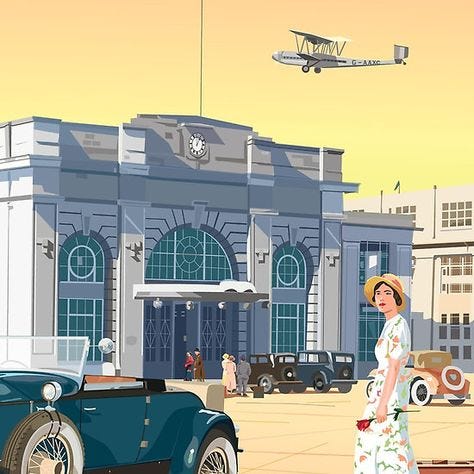The Handley Page HP 42, Britain’s long-range airliner in 1930.
Photos of an HP 42. — Public Domain
I nodded off watching an old documentary on historic aircraft. I woke up to a most interesting bit on London, England’s Croydon Airport (the predecessor to Heathrow). This fascinating biplane — a huge machine, with a long fuselage — was taking off.
Wow! I’d never seen anything like it. It looked like something Jules Verne would have concocted for a screenplay of his rejected novel, Paris in the Twentieth Century.
Now I was wide awake, and I had to find out what this impressive airship was.
In our historical memory, we tend to jump from first to first, so we think of the Wright Brothers, Charles Lindbergh, and somehow jump to modern airplanes without consideration of the steps it took to bring about the modern airliner.
Frederick Handley Page, aircraft pioneer.
He looks more like a banker or a barrister, but Frederick Handley Page is one of the pioneers of modern aviation. In 1909 he founded a company to manufacture airplanes. Ten years later, the race was on to provide a dependable transatlantic crossing.
Handley Page didn’t make the first nonstop transatlantic flight in that contest, but they flew the first air mail that same year between Canada and the United States.
In the 1920s airports were grass fields, navigation was pretty basic, and Hadley Page developed a 42 seat passenger plane. The Handley Page HP 42 made is inaugural flight in 1930.
It’s unique wing configuration gave it stability and allowed it to be flown at low speeds — essential for operation with the unpaved airports of the day. Yes, the first large airliner was designed to fly slow.
Eight of these planes were built for Imperial Airways, and all eight proved to be safe and reliable. In the next decade they had an impressive safety record. They flew thousands of miles uniting the far flung empire without a single fatal mishap. They were used as troop transports during World War II.
Passenger cabin of an HP 42.
The passenger cabin was modeled after the cars of the Orient Express train. In fact, travelers on today’s Simplon Orient Express ride in cars that were manufactured in the 1920s.
The wings were covered with doped linen fabric, just like those of all early aircraft, but the fuselage was covered with corrugated metal. It truly was a transitional design.
It was the large airliner of its day! (to be continued)
The Handley Page HP 42 in Action [click to view]










